Don't wanna be here? Send us removal request.
Text
STORAGE REQUIREMENTS FOR RUBBER PRODUCTS
Rubber is a kind of elastic material. What should I do if it expands and contracts when it is hot and cold? This requires that the rubber product be stored well to ensure that it will not change. There are strict requirements for the storage of rubber products.
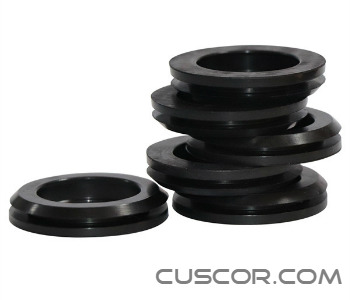
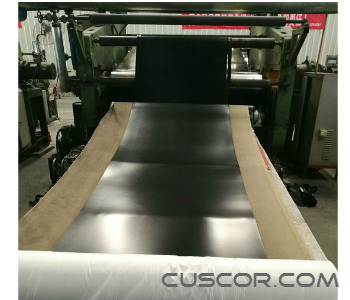

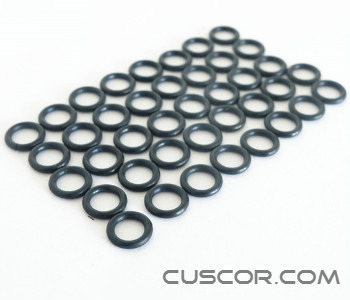
1. Lighting: Avoid sunlight and strong artificial light sources containing ultraviolet rays. UV-resistant bags provide the best protection. Red or orange paint or film is recommended for warehouse windows.
2. Humidity: The relative humidity of the warehouse should be less than 70%, to avoid being too wet or too dry, and condensation should not occur.
3. Contact with metal or non-metallic materials: Do not allow contact with magnetic materials, cast iron, copper and its alloys, or materials containing rubber that can damage the rubber. Do not use PVC material for packing seals. Do not mix seals of different materials.
4. Radiation: Avoid damage to rubber products caused by ionizing radiation.
5. Oxygen and ozone: Rubber materials should be prevented from being exposed to circulating air. This can be achieved by packaging, wrapping, storing in an airtight container or other suitable methods. Ozone is harmful to most elastomers. Avoid the following equipment in the warehouse: mercury vapor lamps, high-voltage electrical equipment, motors, and other equipment.
6. Temperature: 5-25 ℃ is the ideal storage temperature. Avoid contact with heat and sunlight. Rubber products removed from low-temperature storage conditions should be placed in an environment of 20 ° C before use.
7. Contact with liquid or semi-solid materials: Do not contact solvents, oils, fats or other semi-solid materials.
8. Deformation: The rubber parts should be placed as freely as possible to avoid being stretched, compressed or deformed.
9. Cleaning: As needed, the seals can be cleaned with soap and water. However, water cannot contact fiber-reinforced seals, rubber-metal bonded seals, and AU material seals. Disinfectants, organic solvents, and sharp-edged tools must not be used. After cleaning, the rubber products should be dried at room temperature, and should not be near the heat source.
0 notes
Text
APPLICATION OF EPDM IN THE AUTOMOTIVE FIELD
EPDM rubber is basically a saturated polymer with very good aging resistance, good weather resistance, excellent electrical insulation properties, good chemical resistance, and good impact elasticity. Today EPDM is widely used in the automotive industry and is mainly reflected in the following three products:
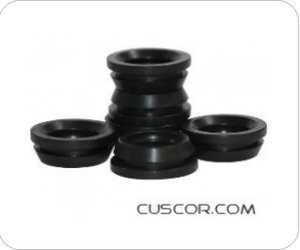
1. AUTOMOBILE TIRES
Butyl rubber (IIR) has excellent air tightness, weather resistance, and ozone resistance, and is an ideal material for automobile tires; however, IIR has poor processability and poor compatibility with filler oils and carbon black. Adding a small amount of EPDM to the IIR not only solves the above problems, but also makes the surface of this rubber extrudate smooth, eliminates the phenomenon of thinning at the folding place when parked, and improves the compression resistance and permanent wear resistance. And dynamic mechanical properties, improve low-temperature flexibility and oxidation resistance.
2. AUTOMOTIVE COOLANT HOSE
The increasingly compact body structure and engine structure of modern automobiles, coupled with the continuous improvement in fuel efficiency, have led to a continuous rise in the temperature under the hood of the automobile, and a significant increase in the operating temperature of the automobile cooling system. The temperature of the coolant in the car during the exercise can reach 90-110 ° C, which requires the car radiator coolant hose to work at high temperatures. EPDM is an excellent elastomer material. When used in radiator hoses, EPDM not only has good heat resistance and ozone resistance, but also has excellent oil resistance and chemical stability.
3. CAR SEAL
Nowadays, cars are becoming more and more popular, and the requirements for speed are getting higher and higher. When the car is braked frequently at high speed, a large amount of frictional heat will increase the temperature of the heating system. When the boiling point of the brake fluid is exceeded, the evaporation of the brake fluid to form steam may cause air blocking, which may cause brake failure. Therefore, the sealing requirements of the piston seal ring are very high. At present, both at home and abroad are made of EPDM materials with good moisture resistance. EPDM vulcanized with salt bath or microwave can be used for sealing materials of automobile doors and windows, windshield; especially continuous vulcanized EPDM sealing strips, whose performance meets relevant technical requirements.
0 notes
Text
5 ADVANTAGES OF RUBBER PRODUCTS
Nowadays, rubber products are becoming more and more popular. The raw material of rubber products is mainly rubber. Because of their special characteristics and their advantages, they are used in many industries.
1. High and low temperature resistance, can be used for a long time at 200 ℃, and still elastic at -60 ℃.
2. Electrical insulation performance, the dielectric properties of rubber are very good, especially at high temperatures, the dielectric properties greatly exceed ordinary organic rubber, and the dielectric strength is hardly affected by temperature in the range of 20-200 ℃.
3. Excellent weather resistance, ozone resistance, and ultraviolet radiation resistance, no cracking after long-term outdoor use. It is generally believed that silicone rubber can be used outdoors for more than 20 years.
4. Excellent high-temperature compression permanent deformation.
5. Good processing performance, easy forming, and other advantages. Various products can be made by extrusion hot air vulcanization molding, die addition molding, extension molding and other methods. Because rubber products have excellent comprehensive performance and good technical and economic effects, they have several advantages in aviation, aerospace, atomic energy, electrical appliances, electronic rubber, and rubber products. Instruments, automobiles, machinery, metallurgy, chemicals, medical and health, and daily life Widely used in the field.
0 notes
Text
CHARACTERISTICS OF RUBBER SHAPED PARTS
The rubber industry is widely used. Some products are not standard or have different shapes. The rubber shaped parts that they are equipped with are also different. The following introduces the rubber shaped parts.
1. Rubber is a hot-melt and thermosetting elastomer, and plastic is a hot-melt and cold-set. Due to the different types of sulfur compounds, the temperature range of molding and curing of rubber is also quite different. It can even be affected by climate change and indoor temperature and humidity. Therefore, the production conditions of rubber parts need to be appropriately adjusted at any time. If not, the quality of rubber parts may be different.
2. During the molding of rubber shaped parts, the cohesive force due to the elastic body can not be eliminated due to the large pressure. When the molded part is released from the mold, it will often cause extremely unstable shrinkage. After a period of time, it can be gently stabilized. Therefore, when a rubber accessory is designed, it is necessary to calculate the fit carefully regardless of the formula or mold. If not, the size of the rubber accessory is likely to be unstable and the quality of the rubber accessory is low.
3. Rubber profiled parts are made of rubber raw material after mixing with rubber mixer as raw material. During rubber mixing, the formula is designed according to the characteristics of the required rubber parts and the required product hardness is determined. The product is molded by a rubber flat vulcanizing machine. After the product is formed, the flashing treatment is finally performed to smooth the product surface without burrs.
0 notes
Text
The applications of the rubber seal
Cushioning + Vibration Damping
Buffer and shock-absorbing materials are widely used in electronics, automotive, and computer products.
If you have a problem with noise, vibration, or cushioning, please contact us.
CUSCOR can provide the most suitable foam tape, cushion, etc. for your application.
Gaskets + Sealing
A wide variety of gaskets are required depending on the environment in which they are used. Such as waterproof gaskets, dust gaskets, liquid gas gaskets, etc.
CUSCOR produces a wide range of gaskets. With a variety of materials and production processes, we can design low-cost and efficient��gaskets to solve the sealing problem.
Bonding + Joining
The experts at CUSCOR will work with you to understand the substrates you are attempting to bond, environmental factors, and final application to make the best material recommendation for your application.
From permanent composites to temporary adsorption to detachable auxiliary assemblies, CUSCOR has developed a variety of materials.
Adhesive materials include acrylic foam tape, transfer tape, double-sided tape, and reusable fastening tape.
Acoustics + Damping
In the field of mechanical manufacturing, automotive NVH, and other fields, there is a lot of noise, vibration, and buffer problems. Polymer materials have a wide range of mature applications in these fields.
If you need to contact us, CUSCOR will provide you with the most suitable acoustic materials.
Filtering + Venting
CUSCOR produces a wide range of filter materials and breathable materials.
The permeable material reduces internal pressure and moisture condensation while forming a permeable seal, eliminating the need for physical ventilation.
Filter material isolates dust, dirt, moisture and other contaminants as sound and air pass.
Thermal Insulation + Surface Protection
The experts at CUSCOR will discuss with you the use, working environment, and material requirements of insulation materials to recommend suitable polymer insulation materials.
Products need to be protected in the production process, packaging, and transportation. CUSCOR produces a variety of surface protection materials.
0 notes
Text
How to clean and maintain rubber product molds ?
Before understanding the maintenance skills of rubber product molds, let us first understand the reasons that cause the scaling of rubber product molds. The scaling is initially caused by zinc sulfide (inorganic deposits) attached to the mold and forms a gray deposit layer; As a function of temperature, low molecular weight components in the mixture will adhere to the zinc sulfide crystallites and cause the second stage of deposition (organic deposition). Oxidation products will be formed within a certain period of time and lead to carbon deposition. After understanding the reasons for the scaling of rubber product molds, some targeted measures can be taken for cleaning and maintenance. Common cleaning methods for rubber products are as follows:
1. Ultrasonic descaling, using the principle of frequency and wavelength to remove dirt in the cavity. It works better when used with mold cleaning water. This effect is very good, but the cost is relatively high.
2. Mechanical descaling. Now, most rubber product manufacturers are equipped with sandblasting machines that can directly blast the surface of the mold with resin sand. This method has a better cleaning effect and is a more commonly used mold cleaning method.
3. Mold electroplating, plating a layer of hard chromium on the surface of the mold. Practice has shown that this method can effectively solve the problem of adhesion of deposits on the surface of the mold. This method is more suitable for mass rubber product molds.
4. Chemical cleaning, use professional mold cleaning water or dilute sulfuric acid to directly clean the oxide scale parts. This method is fast and effective, but it will produce a pungent odor during the cleaning process and will also pollute the environment. This method has been gradually eliminated, and some small processing plants are still in use.
0 notes
Text
How to solve the quality problems in die-cutting processing?
With the wide application of die-cutting products, the quality problems in die-cutting processing directly affect the quality of products. Therefore, how to solve the quality problems of die-cutting processing:
1. Choose advanced plate-making methods to improve the accuracy of die-cutting plates:
Try to ensure that the die-cutting indentation and printing are in the same working environment or the same working environment, and the glazing and laminated printed sheets should be die-cut pretreatment to minimize the impact of paper deformation on the accuracy of die-cutting.
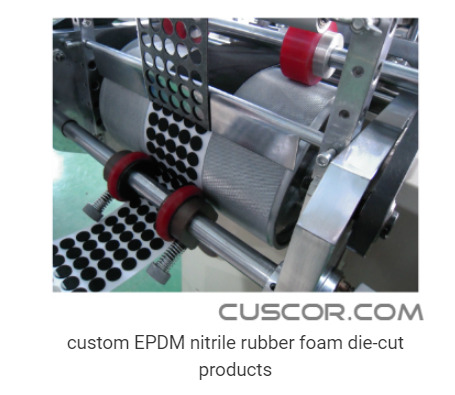
2. Preparation work before production Die cutting machine:
Check the hot stamping version against the manuscript, check whether the hot stamping version meets the quality requirements, the operation of the mechanical equipment, whether the on-site priority adjustment is normal, check whether the switches, brakes and other parts of the mechanical equipment are flexible and reliable, and the original and auxiliary materials are ready. The die-cutting machine should be sealed with cling paper, and copper plates should be used for large-volume and frequently-made products, and film-mounted plates should be exposed to the more difficult ones.
youtube
0 notes
Text
How to clean and maintain rubber product molds?
Before understanding the maintenance skills of rubber product molds, let us first understand the reasons that cause the scaling of rubber product molds. The scaling is initially caused by zinc sulfide (inorganic deposits) attached to the mold and forms a gray deposit layer; As a function of temperature, low molecular weight components in the mixture will adhere to the zinc sulfide crystallites and cause the second stage of deposition (organic deposition). Oxidation products will be formed within a certain period of time and lead to carbon deposition. After understanding the reasons for the scaling of rubber product molds, some targeted measures can be taken for cleaning and maintenance. Common cleaning methods for rubber products are as follows:

1. Ultrasonic descaling, using the principle of frequency and wavelength to remove dirt in the cavity. It works better when used with mold cleaning water. This effect is very good, but the cost is relatively high.
2. Mechanical descaling. Now, most rubber product manufacturers are equipped with sandblasting machines that can directly blast the surface of the mold with resin sand. This method has a better cleaning effect and is a more commonly used mold cleaning method.
3. Mold electroplating, plating a layer of hard chromium on the surface of the mold. Practice has shown that this method can effectively solve the problem of adhesion of deposits on the surface of the mold. This method is more suitable for mass rubber product molds.
4. Chemical cleaning, use professional mold cleaning water or dilute sulfuric acid to directly clean the oxide scale parts. This method is fast and effective, but it will produce a pungent odor during the cleaning process and will also pollute the environment. This method has been gradually eliminated, and some small processing plants are still in use.
0 notes
Text
Four Simple Physical Identification Methods for Rubber Gaskets
Distinguish: smell
The rubber gasket does not have a pungent odor. The rubber gasket is made of virgin rubber and does not contain secondary rubber, waste rubber, recycled rubber, recollected rubber and any plastic components. The product will not produce irritating smell, and the rubber smell can be volatilized under normal ventilation.
Second Discrimination: Impurities
Since the rubber gasket does not contain secondary rubber, there is no excessive impurities in all products. Cut the insulating rubber mat with a wallpaper knife and see the cut surface of the rubber mat. There is no excessive magazine. Touch the cut surface of the insulating rubber mat with your fingers. powder.
Three Distinctions: Elasticity
Rubber gasket has good physical and mechanical properties, excellent insulation properties, and can work in a dry environment with high dielectric coefficient requirements in the air of -35~ 100℃. Strong elasticity, high tensile strength, and high surface gloss.
Four Distinctions: Bubbles
Surface bubbles (no more than 5 bubbles per square meter area less than 1cm², and the distance between any two bubbles is not less than 40cmm) uneven edges or the width of the sponge-like part shall not exceed 10mm, and the length shall not exceed 1/10 of the total length of the rubber sheet, and shall not Cracks are allowed.

0 notes
Text
The Development of Silicone Rubber
The silicone rubber industry has achieved remarkable results. With the rapid growth of consumption, the silicone rubber industry has begun to transform from high-performance special rubber to popular synthetic rubber, becoming one of the most used rubber varieties.
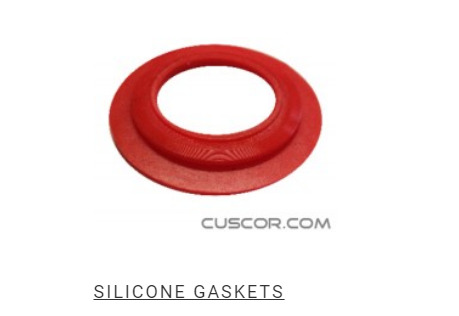
It is reported that from the perspective of rubber consumption, natural rubber accounts for 41.8%, and styrene butadiene rubber and butadiene rubber together account for 28.4%. Silicone rubber is usually only used in a few non-tire fields such as construction sealants and conductive keys, accounting for only 6.4% of total rubber consumption. Therefore, as silicone rubber replaces other types of rubber in some non-tire segments, its consumption is bound to grow exponentially, and the market space will be further opened up. In this regard, the industry also agrees with the above views. It is estimated that in 2021, the proportion of silicone rubber in total rubber consumption is expected to reach 20% to 33%, that is, the consumption of silicone rubber is expected to reach 3 million to 5 million tons.
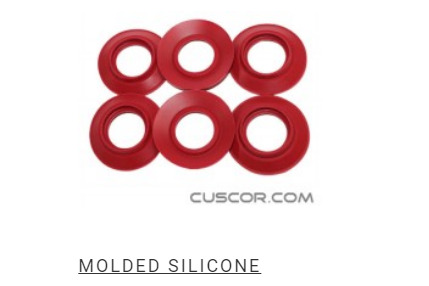
In other words, the development potential and long-term development of the silicone rubber industry are very attractive. The rapid development of the silicone rubber industry will also have a profound impact on upstream and downstream industries. In fact, the upstream and downstream industry linkage effects of the silicone rubber industry have begun to gradually appear. Some experts pointed out that the bright spot of the development of the silicone rubber industry is that it can greatly increase the domestic self-sufficiency rate of rubber. According to statistics, by 2021, the proportion of silicone rubber in my country's rubber consumption will increase from 6.5% to 33%. The overall domestic self-sufficiency rate of my country's rubber can be increased from about 50% to more than 80%, which greatly eases the tight supply of rubber and reduces the production cost of the rubber processing industry.
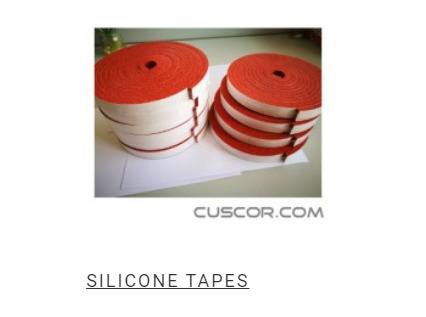
It can be seen that the development of the silicone rubber industry is not just a single development of a single industry, but involves the common development of multiple industries. It has far-reaching significance for the profitability of molded rubber products.
youtube
0 notes
Text
Three Molding Methods of Rubber Seals
Rubber seals are a kind of general basic components in sealing devices, which play a very important role in the contradiction between leakage and sealing. Rubber seals are a type of rubber products widely used in sealing technology.
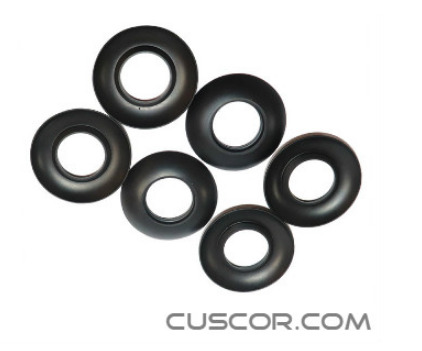
1. Compression molding of rubber seals
Rubber seals are commonly used to manufacture rubber products with complex shapes such as cups and sealing rings. The rubber is placed in the mold for heating and forming with the help of a molding mold.
2. Injection molding
Rubber seals are used for more complex rubber products. Tire treads, rubber tubes, and metal wire surface coatings need to be manufactured by injection molding. It is a method in which the rubber compound with a certain degree of plasticity is put into the hopper of the extruder and continuously molded through various mouth shapes under the extrusion of the screw. The rubber material must be preheated before being pressed out by the aging furnace to ensure that the rubber material is soft and easy to extrude, so that a smooth surface and accurate size rubber product can be obtained.
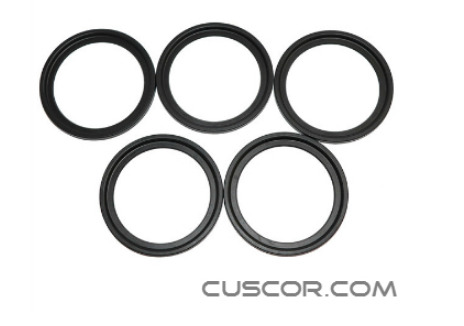
3. Calendering
Rubber seals are suitable for the manufacture of simple sheet-shaped and plate-shaped products. It is a method of pressing the rubber compound into a film with a certain thickness and a width through a calender, called calendering. Some textile fiber materials used in rubber products, such as tires, rubber cloth, hoses, etc., must be coated with a thin layer of glue. Gluing on the fiber is also called glueing or rubbing. The glueing process is generally completed on a calender.
1 note
·
View note